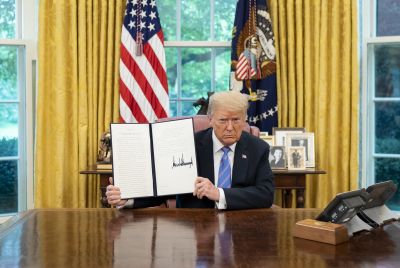Relationship Between UK and Ireland
Commenting on Queen Elizabeth's banquet speech at Dublin Castle in May, BBC royal correspondent Nicolas Witchell thought she "came pretty close to apology." He said there was an "underlying sentiment of sorrow and regret" in the language of the speech.
Nearly a century after the last royal visit to Ireland, history was made with Queen Elizabeth II making the first ever visit by a British monarch to the Republic of Ireland.
She was candid in what she said in the royal banquet speech; hers were personal expressions, rare for British royalty. "We can all see things which we would wish had been done differently or not at all."
Three hundred and seventy years after Henry II landed his armies on Irish soil, his descendant Henry VIII was the first English monarch to pronounce himself King of England and Ireland in 1541.
Centuries of exploitation and cruelty battered the spirit of Irish people. To them the Crown symbolized subjugation of their lands by a distant and uncaring government in London. The long history of relationship between England and Ireland has been defining, contradictory and at times obsessive.
In the course of the history of their chequered relationship, millions of Irish people were driven out of their homes. In the 1840s, the potato crop failed in Ireland, causing death by starvation to nearly 1 million people. We need to sympathize with the Irish people who called the British ruling class "glorified landlords" in Ireland.
But by strange logic, the Irish have usually given a warm welcome to visiting British monarchs. Nearly a million turned out to greet Queen Victoria in Dublin area during her second visit to Ireland in 1853.
But during the reign of the same monarch, the Irish freedom struggle revived. Ireland would want to be free and sovereign. Three out of seven attempts made on the life of Queen Victoria during her 64-year reign were by Irish assailants.
The insurrections of 1803, 1848 and 1867 were small in comparison to the United Irishmen Rising of 1798. But the 1916 Easter Rising was the outburst of a population driven to violent insurrection by the perceived failings of a government.
The 1922 treaty allowed Ireland the status of British Dominion while six northern counties were given the right to remain part of the United Kingdom. This led to the partition of Ireland.
In 1937, Eamon de Valera introduced new constitution for Ireland wherein the president of Ireland replaced the British Crown as head of state, and in 1948, the Irish Parliament passed the Republic of Ireland Act and thus Ireland, having lost Northern Ireland, became a sovereign state.
The British monarch's formal visit in May last was more than a goodwill gesture. It showed that UK wanted reversal of past acrimonious relationship. It sought to open a new chapter of relations based on equality, justice and collaboration. The Queen gave many indications to that purpose.
British royalty arrived at Casement Aerodrome, Baldonnel, outside Dublin. The base is named after Sir Roger Casement, an Irish revolutionary who was hanged in 1916 for his role in the Easter Rising.
The Queen began her royal banquet speech with address in Irish which made the Irish President May McAleese say "wow." Earlier, the President had received the monarch with a handshake.
The Queen took a trip to Croke Park in Dublin where 14 people had been gunned down by the British troops during a Gaelic Football match 91 years ago. She also laid a wreath at the Garden of Remembrance of 1916, where Irish martyrs fighting the British colonialists remain buried.
The Irish Examiner made a profound point while commenting on the visit and all that lay behind it. It said, "Modern economics is more important than old politics." Britain is the biggest trading partner of the Republic of Ireland. The axiom is that good political relations make good business relations.
But there have been dissenting voices, even if feeble by contrast. Staunch nationalists in the Republic of Ireland were unmoved. Some said the 30 million euros cost of the visit was unaffordable for the Republic of Ireland which was passing through a phase of deep financial crisis.
To sum up, it's for the first time in the history of bilateral relations that the UK has expressed unhappiness on the long-strained relationship with Ireland. Opening a new chapter based on equality and justice, and developing bilateral or multilateral trading partnership are the means of stabilizing and promoting good relations between the UK and Ireland. The long era of acrimony, suspicion and hatred must be left behind, never to be revisited. The four-day visit of the British monarch has paved the way for a bright and lasting era of the UK-Ireland relationship.
© Copyright IBTimes 2025. All rights reserved.





















